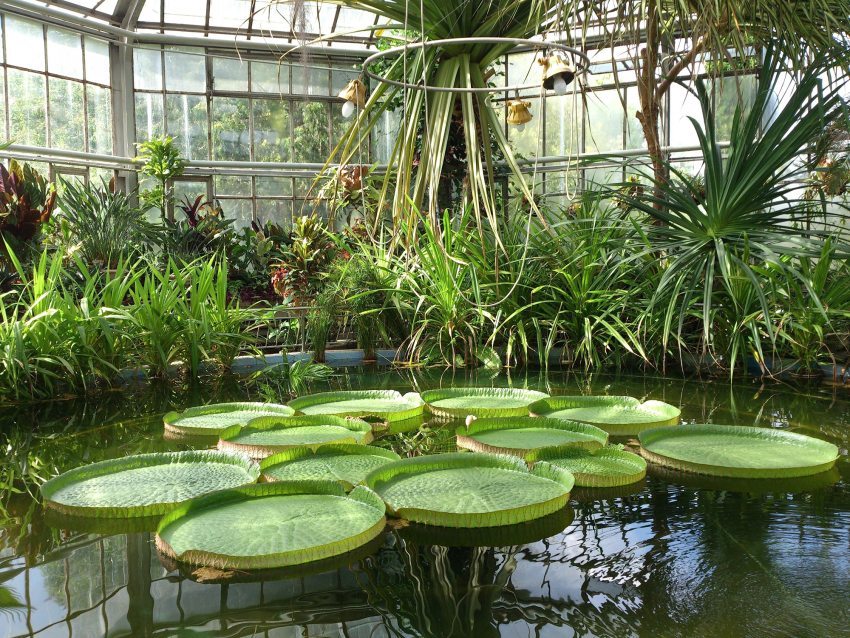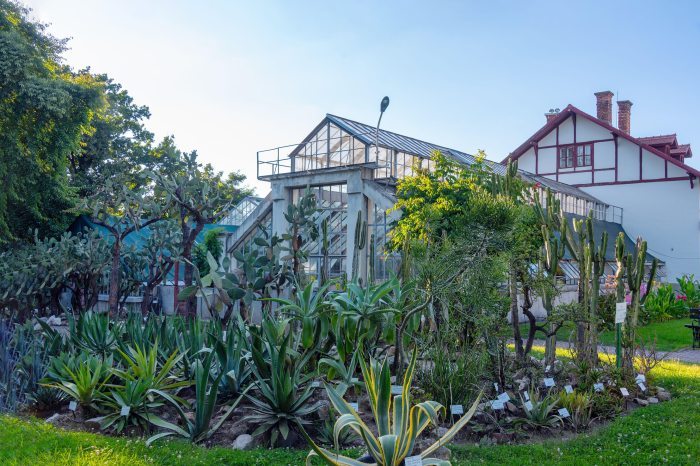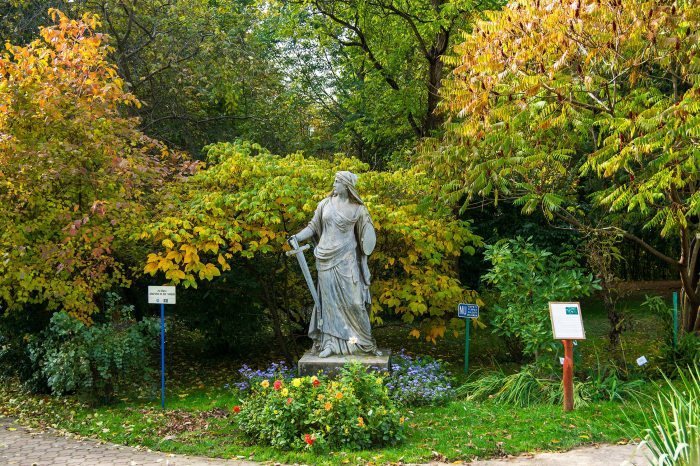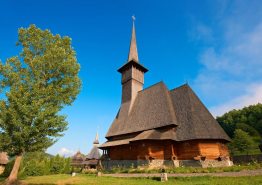One of the richest botanical gardens in south-east Europe – ”Look but don’t touch”
Sámuel Brassai, the natural scientist and keen keeper of the new Botanical Garden in Kolozsvár (Cluj) warned visitors to the museum in the 1860s with this sentence, probably not realizing that sixty-five years later the plants of the botanical garden would be opening their leaves in Majális Street. Today, the landmark, which is an institution of the Babeş-Bolyai University, is considered one of the richest botanical gardens in the south-eastern European region.

The Mikó Garden
The first Botanical Garden in Kolozsvár (Cluj) was situated in the Mikó estate. Count Imre Mikó, a Transylvanian politician and historian, donated his fourteen-acre estate, i. e. approximately 80,000 square meters of land, including the neoclassical summer residence, to the Transylvanian Museum Society. Established in 1859 to promote scientific and literary life in Transylvania, the Society’s first director and museum curator was the natural historian and polyhistor Sámuel Brassai, who tried to preserve the English garden character of the original garden when he designed the Botanical Garden.
He made his own handwritten "Look but don't touch" signs, in an attempt to control the excessive curiosity of visitors and students.
In 1872, the Transylvanian Museum Society transferred the right to use the garden to the new University of Sciences, then named after Franz Joseph, on condition that "the University does not allow the arboretum, which currently exists in the park-like part of the garden and contains almost all the trees and shrubs of Transylvania, to be destroyed". Ágost Kanitz was the university's first botany teacher and the founder of the first Hungarian-language botanical journal. Under his direction, hot and cold greenhouses were built, the former with a minimum temperature of ten degrees Celsius, and the latter with an average temperature of between five and twelve degrees Celsius.
Kanitz has developed a close working relationship with the botanical gardens in Florence, Bonn, Berlin, Budapest, and elsewhere. As time went on, the university took an increasing share of the garden. In the 1880s, the buildings of the Institute of Botany and the Institute of Zoology were inaugurated, occupying one-fifth of the total area. At the same time, it was the first place in Cluj-Napoca to have electricity, and by the turn of the century, under the direction of botanist Gyula Istvánffi, piped water for irrigation was available. Until then, water was carried to the plants in barrels on donkeys. During this period, several circular pools and a rock garden were also created.
In 1905, a new era began in the life of the garden with botanist Aladár Richter, who is referred to by many sources as the founder of the garden, and the seven years of his administration are referred to as a real heyday.
Richter has done much to promote the botanical gardens, informing professionals and the lay public about the latest news and interesting facts in the form of reports and articles. As the park's proportion of green space was decreasing, he dreamt up a new area to be used exclusively for botanical purposes. This is how the plot of land on Majális Street, which was then a holiday park, was brought into view, a twenty-acre area, or around 90,000 square meters, divided by the Gypsy Brook and dotted with fruit trees. Richter bought the land for the institution in 1912 with state aid.
Let’s move!
The relocation of the garden was thwarted by the First World War, and the growing food shortage led to the cultivation of crops in the shade of the botanical specialties. It was not until the 1920s that the garden was restored to its former glory. Alexandru Borza, then head of the botany department at the university then named after King Ferdinand I, successfully managed the relocation of the botanical garden by 1923, 'building a greenhouse, establishing plant systematics and botanical geography groups, creating an extremely instructive Japanese garden, and even running a well-equipped small meteorological station in the garden', wrote Borza in the May 1945 issue of Transylvania, describing his achievements over two decades. His partner in this challenging task was botanist Gyula Erazmus Nyárády.
The garden was used for research and teaching purposes until 1925 when it was opened to the public. "The new, modern institution in Kolozsvár (Cluj), which is truly a well-managed botanical garden, will be one of the most well-managed public walkways for the citizens of Kolozsvár (Cluj).
Last year, 15,000 people visited the garden.
[...] There is no entrance fee on Monday and Thursday afternoons, but on other days the entrance fee is 5 lei. [...] You can see the flowers and a new series of palms between 4 and 5 pm daily. Any school of the garden can be visited at any time under the guidance of the professors," reported the newspaper Ellentzék ('The Opposition') in April 1927.
Under the spell of diversity
Today, the fourteen hectares of botanical gardens are home to eleven thousand different species, "one of the distinctive features of the trees, shrubs, and grasses collected from all parts of the country and the globe is that they seem to have grown here by chance. At first glance, we might have the mistaken impression that we are looking at a patchwork of wild nature. In only a few sections do we see the influence of man's wisdom, knowledge and art," writes the 1952 issue of the Szabad Földműves ('Free Farmer') magazine.
At the entrance, visitors are greeted by ornamental plants, with a different flowering plant for each season, snowdrops, tulips, or forget-me-nots. The most famous of these is the rose garden, where more than 400 different varieties are on display. The garden then presents the flora and the different types of forests according to their botanical and geographical regions. The rock garden is home to alpine and subalpine plants. The Japanese gardens have a classical feel with stone lanterns, stepping stones, bridges, and tea houses, while the Roman gardens, which showcase Mediterranean species, have several sarcophagi and statues, including one of Ceres.
In Roman mythology, Ceres is the goddess of motherly love, who also watches over the flora.
In the 1960s, greenhouses were also set up in the garden on Majális Street, with "huge hot water pools in which exotic aquatic plants flourish. A two-year-old child can easily sit on the huge leaves of a water lily called Victoria Regia, like a big round, green, shiny raft," wrote the Szabad Földműves ('Free Farmer') magazine in 1952. The other greenhouse is a showcase of Australian and Mediterranean flora: home to fig trees, olive trees, citrus trees, pomegranate trees, and araucarias (better known as southern pines). From here, three more greenhouses open up to house succulent plants, bromeliads, and insectivorous plants, while a separate greenhouse houses tropical plants such as bananas, coffee, coconut, and dates.
The botanical gardens include a water tower, the Institute of Botany, and the Botanical Museum, with over 7,000 species on display.
Here you will find a unique 'plant collection', or as the experts call it, the Herbarium, with over 500,000 (ed: the current figure is 700,000) pressed plants. There is also a huge collection of fossil plants. The Welwitschia from South Africa, which is related to our pines but bears no resemblance to them, is a marvel. Its two withered leaves can reach a length of tens of meters, as they grow throughout their life from a stump-like trunk," says the November 1970 issue of Hargita magazine.
The botanical garden, now named after Alexandru Borza, is an institution of the Babeş-Bolyai University and is free to visit with a ticket.
The publication of this article was supported by the Carola Association.









